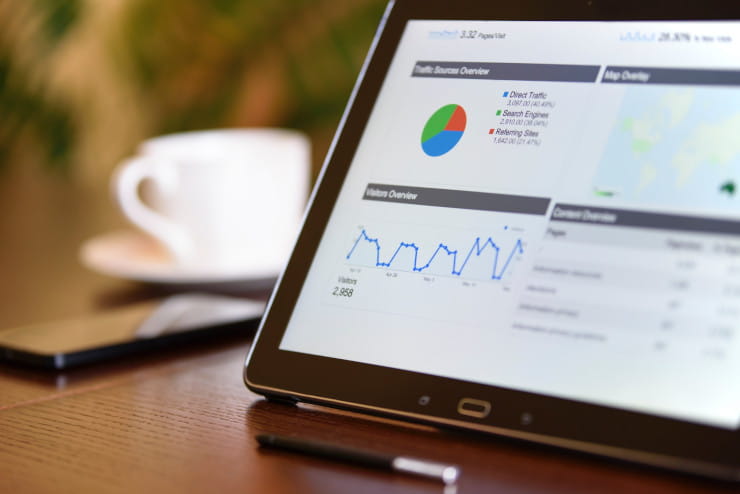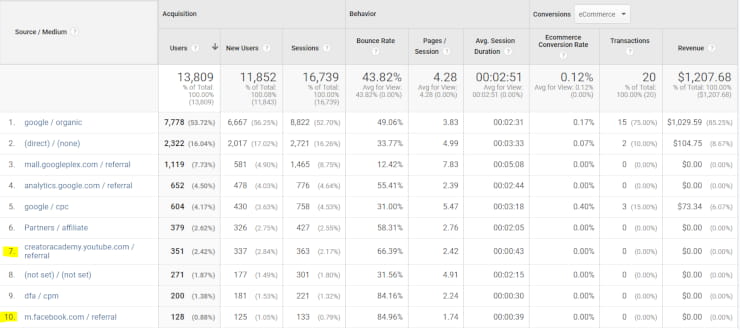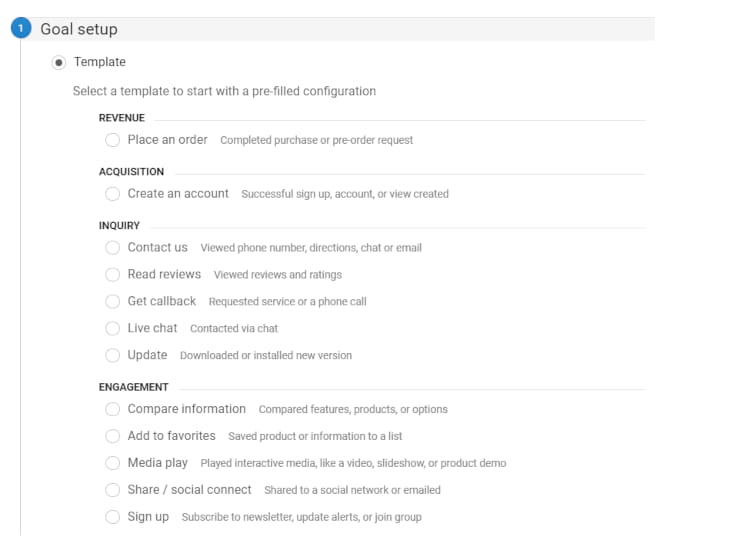R.O.I.
One little acronym has plagued and burdened even the best social media marketers for years. How can you quantify the exact success of what we do?
I know it sounds challenging, but it really isn’t.
Over the past decade, social media has cemented itself as a legitimate business marketing channel, and with it comes a breadth of tools, analytics features, and KPI tracking that allows companies and marketers to quantify their social efforts.

So, how can you prove your social media efforts are contributing to the bottom line? This article will show you how to track and measure your social media ROI in 3 simple steps.
What is Social Media ROI and How is it Calculated?

Have you ever sat in a board meeting (or on a Zoom call) after presenting all of your hard-earned social media successes, and the CEO says, “Awesome, so what’s our return on investment?”
Cue the crickets
This is only one of the many reasons why you should track the ROI of social media marketing campaigns.
ROI stands for “return on investment.” Companies spend time, money, and valuable resources on social media, so they naturally want to know what they’re getting out of it.
In order to properly quantify your social media ROI, you first need to define what is most valuable to you.
There are many tangible ways of quantifying ROI, such as measuring the success of social campaigns, which lead to business-driven results. These types of social media results can be broken down into dollars and cents.
For example, you spent $500 on Facebook ads marketing and generated $2,000 in sales. Your profit here is $1,500 (revenue – investment = profit) and your social media marketing ROI can be calculated as $1,500 profit / $500 investment x 100 = 300%.
A 300% return on investment is pretty darn good!
However, there are other social media results and benefits, such as brand awareness and engagement, that can’t be given a monetary value. Instead, we measure our social ROI using engagement metrics, impressions, and social shares.
3 Steps to Measuring Social Media ROI
1. Define the Purpose of Your Social Media Strategy and Set Goals
The first step is to understand why your business needs social media and to define your social media objectives. What’s important to you?
Whether it’s generating new business, growing your brand, networking with influencers, or simply finding a way to connect better and engage with your followers, write them down and share them with your team so everyone is aligned.
Be S.M.A.R.T.
Of course, intelligence goes a long way in business, but here, we’re not talking about “smart” in the traditional sense of the word. Your goals need to be S.M.A.R.T.
Specific
As mentioned above, write down your goals, but be specific about what you want to see from your social media efforts. Instead of saying “Improve Instagram following”, formulate an actionable goal such as “increase Instagram followers by 30% by July.”
Measurable
You need to make sure you can measure every goal you set. What tools are available to help you track and measure your goals’ KPIs? In the next section, we will cover a few great options.
Attainable
No one likes to overpromise and underdeliver. Set goals that are realistic. Do you really think you can grow your Instagram followers by 30% by July? If you have current analytics for your social networks in place, take a look at your history to discover your previous growth rate and make a fair assessment. Don’t put goals in place that aren’t attainable — that sets you up for failure and disappointment.
Relevant
Your social media objectives should always relate to your company’s overall marketing strategy.
Timely
Give yourself a start and end point. Having predefined start dates and deadlines will keep you on track and focused on the key benchmarks against which you will measure your social ROI.
2. Consistently Track & Measure Your Goals
You’ve defined your goals and set benchmarks; now it’s time to start measuring them. We will look at a few different types of the most important metrics and tools to help you measure them on your social networks.
Social Media “Vanity” Metrics
In social media marketing, vanity metrics include followers, page views, and subscribers. These metrics are called vanity because, although they are helpful and interesting for marketers, they don’t necessarily translate into the bottom-line business objectives.
While these metrics aren’t always measured in dollars and cents, they are extremely valuable for evaluating your social media performance.
Each social media platform (Facebook, Twitter, Instagram) comes with its own analytics features, but here are some broader examples to help you better measure your social media and turn it into ROI-focused results:
Engagement
Anyone can quickly browse or view your content, but who’s actually engaging with it? Engagement metrics give you insight into how people are interacting with your social content.
For example, Facebook provides a free analytics feature called FacebookInsights, with which you can track which posts generate the highest level of engagement, such as comments and shares. This type of information can help you discover what your audience is most interested in so you can continue to replicate it, focusing your efforts on higher-value related content.
Types of Engagement Metrics:
- Likes
- Comments
- Clicks
- Shares
- Brand Mentions
Reach
How far is your message going? Measuring reach is important as it gives you an idea of how many people your content is getting in front of.
Reach is measured even if your posts show up on different platforms. For example, content curation tools enable you to embed a social wall displaying and aggregating your relevant social media content on your website. Facebook and Instagram aggregators increase overall reach and streamline messaging on your website.
With so many great tools available to increase the reach of your social media content, it’s only natural to use reach as a core benchmark. While a substantial increase is definitely a positive, reach isn’t a metric you want to focus solely on as it only shows how many people potentially saw your content — not necessarily those who actively interacted with it.
Types of Reach Metrics:
- Followers/Fans
- Impressions
BarkBox’s Social Media ROI Example
Barkbox, an online retailer of doggie goodie bags used a Mother’s Day campaign to capture Millennials’ interest appealing to the idea of “dog mothers”. They created a “Dog Mom Rap” video which went viral on social media and received over 70,000,000 views and 825,000 shares.

If Barkbox’s goal were generating brand awareness or appealing to a new audience, then those metrics would be a key indicator of success. That’s why setting goals and understanding what you’re trying to achieve with your social media efforts is important.
Tools to Help You Track the ROI of Social Media
Buffer
A great tool for managing your social media is Buffer. Not only does it allow you to schedule and implement posts on your behalf, but provides valuable insights and analysis on your social media performance. Buffer Analyze allows you to track your content, measure social ROI, and helps determine which performs best.
Hootsuite
Although a bit pricier than Buffer, Hootsuite is another fantastic social media management tool that automatically schedules your posts and provides some solid analytics tracking. In some of their plans, they offer customized reporting so you can pinpoint detailed analytics. They also offer team metrics that allow you to monitor response time and your team’s interactions.
Social Media “Bottom Line” ROI Metrics
While watching your social media following grow is exciting, we still need to answer that nagging question: “What are we getting out of it?” Or really: “How can we monetize our social efforts?”
Conversions and Leads
All of your social media efforts can be translated into direct business results using Google Analytics. With Google Analytics, you can see which social media channels are driving the most traffic to your website, track conversions and leads, and monitor specific goals for measuring social ROI.
Social Media Traffic Sources
You can view which social media sources are driving the most traffic to your site by accessing the Acquisition report in the Analytics dashboard. From Acquisition click, Source/Medium to view all of the different source channels.
Below, you can see an example of the top 10 results from Google’s demo account, which include some referrals from YouTube and Facebook.

Across the page, you can get more detailed information broken down into Acquisition metrics (users, new users, sessions), Behavior (bounce rates, average session durations), and Conversions. The metrics give you a greater insight into the value of the traffic that you’re generating from social media.
Set Up and Monitor Goals
By setting goals in Analytics, you can directly track which social platforms are driving your key metrics.
Goals can be anything from email registrations to completed purchases. The image below shows an example of some different types of goals you can add in Google Analytics:

How to Set Up Goals in Google Analytics
1. Log in to your Google Analytics Dashboard and click on “Admin” in the bottom left-hand corner, then click on the “Goals” tab.

2. Click on “New Goal.”

3. Now, you can enter your goal type along with its details. Once completed, be sure to “save” your goal. Now you’re ready to start tracking!

Wayfair’s Social Media ROI example
A great example of how a company increased and tracked sales through social media is Wayfair.
Wayfair, an affordable online home goods retailer, had great success converting pinners into customers by offering their Pinterest followers an opportunity to win a dream nursery.

The campaign asked followers to like their Facebook page, pin 15-20 of their favorite nursery items from Wayfair on Pinterest, and share a link to their board on Facebook. The winner received a $200 Wayfair gift card. The dream nursery contest resulted in a 5x increase in sales, a 60% increase in web traffic, and an 89% pageview increase.
This was a very successful campaign for Wayfair. They set up specific goals and tracked them — enabling them to see exactly how successful their social media efforts were in generating business.
3. Keep Track of Social Expenses
So now that we’ve covered setting up and establishing your goals and tracking your performance, all that’s left to do is calculate your investment. There are 3 major expenses in social media.
Social Media Tools
If you’ve decided to use a social media management tool like Buffer or Hootsuite, that monthly subscription cost should be factored into your investment. If you’re calculating your ROI annually, then the monthly cost of your tools should be multiplied by 12.
Time/Labor
Social media management is time-consuming. Hourly or monthly rates for hiring a social media marketing manager or consultant should also be factored into your ROI.
Paid Advertising
Paid posts, ads, and social campaigns on platforms like Facebook and Instagram can generate more revenue, but the cost of these ads should be deducted from your profit.
Tips for Presenting Your Social Media ROI

Now, it’s time to show off your results. Here are some tips on how to present your social media ROI.
First: Review Your Objectives
Before you start diving into the hard numbers, it’s always a good idea to provide an overview of your goals and why they’re important. Why was your goal for the last quarter to drive brand awareness? Why is brand awareness important to us?
This big-picture review provides context for the campaign and allows you to naturally segue into the specific ROI metrics you’ve chosen to use as key benchmarks (i.e., engagement, views, reach, new subscribers, etc.).
Second: Present the Metrics
Many times, the people to whom we are presenting won’t understand all of the facts and figures in relation to social media and what it means for the company. Your job here is to use those hard numbers as imagery in a story you’re going to tell.
If the bounce rate of your traffic from social media sources is 20% lower than other traffic sources, maybe that means you’ve done a really great job boosting engagement through social and people are staying on your webpages longer. Lower bounce rates also contribute to higher ranking factors on Google.
A descriptive story that includes and explains key metrics will paint a clear picture of your campaign’s social ROI and why what you’re doing is important.
Third: Don’t Forget About the Bottom Line
Most companies want to understand how all of this translates into business. Dig into Google Analytics and take a look at the traffic, goals, and conversion metrics. What’s improving or what needs improvement? How much are all of these digital efforts affecting growth?
Be overly prepared here so the CEO won’t even have an opportunity to ask the dreaded “Great, but what’s our ROI on all this?” question!
Finally: Next Steps
Your presentation should always end with your next steps. Sometimes, we don’t always have amazing numbers to show. Maybe there was a decline in traffic, or we didn’t hit our growth goal this month. What strategies can you put in place to improve your social media marketing ROI? Don’t be afraid to iterate and modify your strategy as well as your metrics if needed.
As social media marketers ourselves, we know how hard you work. That’s exactly why it’s important that we can qualify what we do to not only prove we are contributing to the bottom line but to establish our own individual success in what we do.
For more on social media, from social media strategies for nonprofits to the best social media tools for any business, stick around on the Juicer blog. Do you have any social media ROI success stories? Feel free to share with us!
Do you want more? We provide detailed instructions on how to incorporate social media content into your site. Read the following guides to embed social media feeds:




